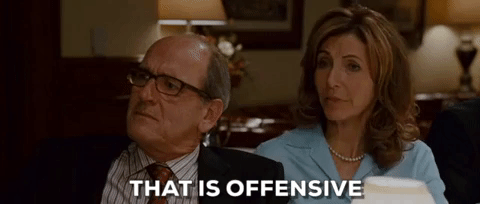The documentary Black Gold opens on a bespectacled man seriously contemplating a porcelain cup full of coffee. He sniffs, peers into the steaming black depths, then sips delicately. He treats the cup of coffee with something near reverence and, perhaps, some manner of reverence is warranted, as he is drinking a cup of the winner of the Specialty Coffee Association of America’s International Cupping Competition. The coffees in that competition hail from Ethiopia, Brazil, and Vietnam and were brewed by baristas from around the world, from Estonia to Canada, Great Britain to the United States. Millions of people across the globe love their coffee, that caffeinated black gold, with a passion.
Since the 1800s, coffee has enjoyed international popularity. A brief examination of the history of coffee in the international economy reveals that demand for coffee has steadily gained momentum for decades. In 1962, a Coffee Study Group at the United Nations negotiated the first International Coffee Agreement between importing and exporting countries. This agreement led to a series of further agreements and cooperations that helped to stabilize the international coffee market over the next decade. The popularity of coffee continued to grow steadily into the 2010s. As of 2015, coffee is the second most actively traded product on the global market, falling in rank only behind the other black gold, oil. Around the world, five hundred billion cups of coffee are enjoyed every year.
The global coffee market has grown substantially over the past decade alone. To look at the United States as an example, in 2008 and 2009 the United States imported 21.5 million 60 kilo bags of coffee. This figure made the United States responsible for over one-quarter of the world’s coffee imports at the time, with Germany, Italy, Japan, and France falling in behind. According to the International Coffee Organization, in 2014 the United States imported well over 27 million bags of coffee. But, beyond these broad trends, where does all this coffee hail from? And how does it make its way into our cups?
Over the years, coffee’s status as a global commodity has created a complex, intricate chain of supply and demand that affects the lives of millions. The supply chain for coffee begins with the growers. These farmers typically work small, family plots and may often organize together under a cooperative in order to gain the power to negotiate better prices for their raw, unprocessed coffee beans. The European Coffee Federation reports that the majority of the world’s coffee supply is grown in Brazil, with Vietnam, Indonesia, and Columbia following. Ethiopia is also significant, as it is the largest coffee supplier in Africa and approximately 67 percent of the country’s export revenue comes from coffee. After leaving the hands of the growers, coffee beans travel to the processors, who are often a part of the local farmers’ cooperatives. Exporters purchase coffee from the processors or cooperatives. Typically, exporters must deal with government agents before they can pass the coffee beans along to dealers. Dealers act as intermediaries between the exporters and the coffee roasters. The roasters are the multinationals; massive corporations that dominate the global coffee market. There are four major players at this level: Kraft, Nestlé, Proctor & Gamble, and Sara Lee. At this level, the value of coffee skyrockets - due primarily to marketing and branding. For example, when a kilo of coffee beans leaves an average Ethiopian farmer, it is worth $0.23. When it leaves a roaster such as Nestlé, it will likely be worth as much as $230. After leaving the roaster, coffee is placed on the shelves of a retailer before finally being purchased by you, the consumer.
However, the supply system does not always follow this pattern. Increasingly, demand is growing for fair trade coffee and direct-purchase coffee. Though similar in their intent of providing a sustainable living to the growers, these two concepts are not identical in practice. Direct-purchasing is a practice pioneered by companies like Nestlé in the late 1980s. Under this strategy, Nestlé and other companies purchase a substantial portion of their coffee beans directly from growers and farming cooperatives. By cutting out all of the middlemen and intermediaries, more money is put into the pockets of farmers without threatening to substantially raise the costs of the roasters. Fair trade coffee, on the other hand, requires anyone buying coffee from the farmers to use a purchasing price that has “been fixed in accordance with the conditions established for this effect by FLO-International.” Because many consumers are willing to pay a slightly higher price for certified fair trade coffee, fair trade is gaining prevalence among importers and roasters.
Though the coffee market is one of the largest and most active in the world, it is currently facing a period of uncertainty and likely downward trends. Towards the end of the most recent coffee growing season, global exports were down to 110.7 million bags, which was 3.1 percent decrease from the previous year. This is not due to a lack of demand. In fact, demand for coffee across the world is increasing and projected to continue increasing over the next five years, as India, China, and Latin America continue to grow their economies. The current problem with coffee is one of supply. Brazil, the world’s largest coffee supplier, has faced devastating droughts in recent years that have limited their coffee production ability. This problem with supply combines with expectations of future demand to push recent coffee prices to multiyear highs.
But Brazil is expected to recover from the drought and rebound supply in the later months of 2016, according to the United States Department of Agriculture’s Foreign Agricultural Service. On a global production scale, the coffee market is expected to grow towards meeting demand by adding approximately 6.4 million bags of coffee. While it is true that coffee faces fluctuations in the market like any other commodity, demand for coffee continues to climb. Supply continues to rise as well, pushed forward by production expansion in countries like Vietnam, Colombia, and Indonesia. The popularity of fair trade coffee is a powerful force in working towards ensuring fair wages for individual coffee growers. It is clear that around the world, millions of people will continue to enjoy their morning mugs of steaming black gold.


























